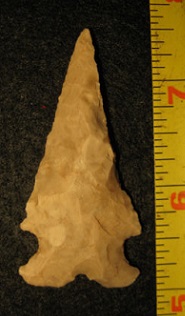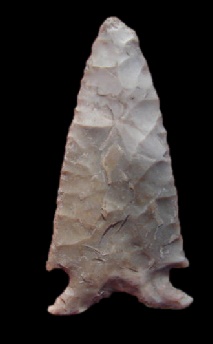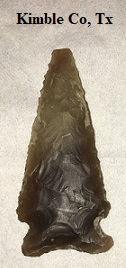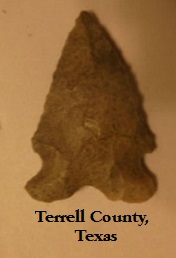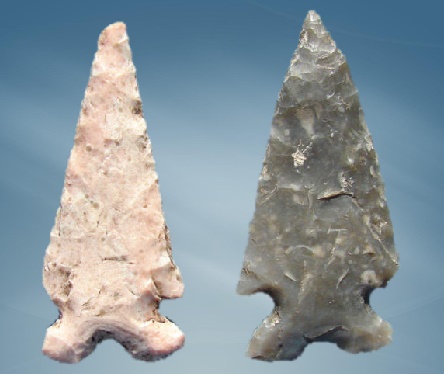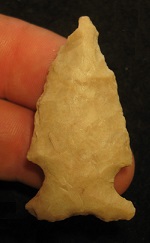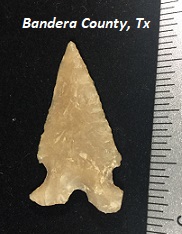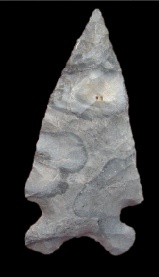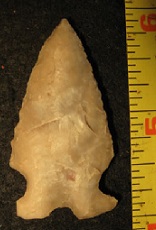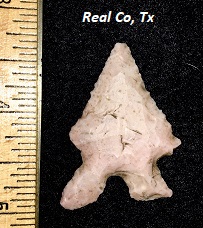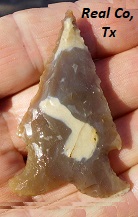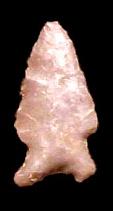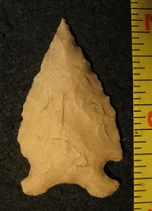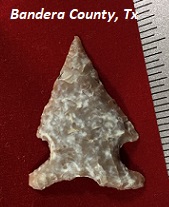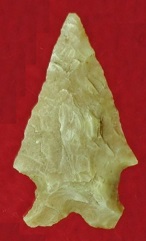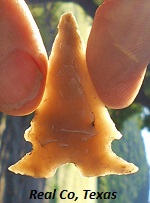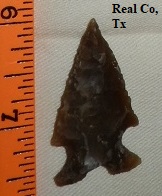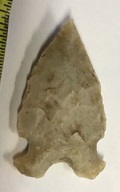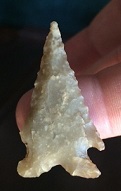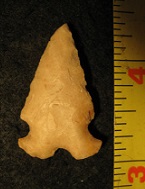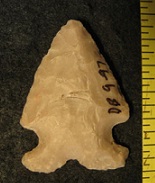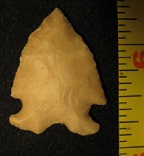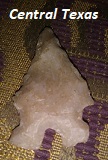Outline is Representative of Size and Shape:

Name Details:
Identified By: Charles J. Kelly
Named For: Frio Valley, Texas
Date Identified: 1947
Type Site: The Lehman Rock Shelter, Gillespie County, Texas
Identified By: Charles J. Kelly
Named For: Frio Valley, Texas
Date Identified: 1947
Type Site: The Lehman Rock Shelter, Gillespie County, Texas
Point Validity:
Valid type
Kelly was a distinguished anthropologist who conducted extensive studies into the Big Bend region of Texas. He served as Curator for the University of Texas – Austin’s Museum of Anthropology before moving to Illinois to direct the University of Southern Illinois’s Museum of Anthropology. This type was named in a professional publication and has many professional references. This is considered a valid type.
Kelly was a distinguished anthropologist who conducted extensive studies into the Big Bend region of Texas. He served as Curator for the University of Texas – Austin’s Museum of Anthropology before moving to Illinois to direct the University of Southern Illinois’s Museum of Anthropology. This type was named in a professional publication and has many professional references. This is considered a valid type.
Frio Notched
AKA: Walking ManCluster:
Description of Physical Characteristics and Flaking Pattern:
This is a broad small to medium (typically 1.5 to 2 inches) triangular side notch to expanding stem / bifurcated point with an elliptical cross section. The blade is straight to slightly excurvate, but may vary to slightly incurvate or recurvate. The shoulders are primarily horizontal, but may vary to slightly barbed to having a slight upward angle. The stem is expanding. The base is commonly recurvate formed from being concave or having a deep U shape notch The ears flare out and may vary from rounded to being squared. This point has a random flaking pattern.
Size Measurements:
Length - 30 to 70 mm (average 50 mm), Stem Length - 5 to 15 mm (typically 1/6 to 1/3 total length), Width at shoulders - 20 to 40 mm, Neck Width - 14 to 19 mm, Stem Width - 20 to 30 mm (average is under 25 mm)
Length - 30 to 70 mm (average 50 mm), Stem Length - 5 to 15 mm (typically 1/6 to 1/3 total length), Width at shoulders - 20 to 40 mm, Neck Width - 14 to 19 mm, Stem Width - 20 to 30 mm (average is under 25 mm)
Commonly Utilized Material:
Additional Comments:
Both Ensor and Frio type points were originally classified as Ensor points for examples found at Belton Reservoir by Miller and Jelks. Suhm et el (1954) re-defined the Ensor type excluding the Frio points from the definition of the Ensor type. Many collector sources consider Frio type points associated with Ensor points as Ensor Split Stem or Ensor Frio points. The primary difference between the Ensor Frio and the Frio type is that the Ensor Frio has a narrow diagonal notch with a slightly barbed shoulder and a recurvate base while the Frio type has a wider parallel notch with a shoulder that is generally at a slight upward angle and a base that is notched or having a V appearance. However, the two types are related and the difference between the two types may represent a continuum of the same type which is why this type has not been accepted professionally as a true type.
This point is commonly referred to as the Walking Man point by collectors.
Both Ensor and Frio type points were originally classified as Ensor points for examples found at Belton Reservoir by Miller and Jelks. Suhm et el (1954) re-defined the Ensor type excluding the Frio points from the definition of the Ensor type. Many collector sources consider Frio type points associated with Ensor points as Ensor Split Stem or Ensor Frio points. The primary difference between the Ensor Frio and the Frio type is that the Ensor Frio has a narrow diagonal notch with a slightly barbed shoulder and a recurvate base while the Frio type has a wider parallel notch with a shoulder that is generally at a slight upward angle and a base that is notched or having a V appearance. However, the two types are related and the difference between the two types may represent a continuum of the same type which is why this type has not been accepted professionally as a true type.
This point is commonly referred to as the Walking Man point by collectors.
Distribution: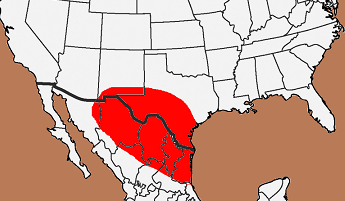

Distribution Comments:
This point is primarily found from central Texas into the lower Pecos of Texas, New Mexico, northern Chihuahua, and northern Coahuila. This type is most common on the western portion of the distribution and decreased frequency towards the eastern portions of the distribution. Bell (1958) places this type into eastern to central Oklahoma.
This point is primarily found from central Texas into the lower Pecos of Texas, New Mexico, northern Chihuahua, and northern Coahuila. This type is most common on the western portion of the distribution and decreased frequency towards the eastern portions of the distribution. Bell (1958) places this type into eastern to central Oklahoma.
Age / Periods:
Date: 2,200 - 1,400 B.P.
Cultural Period: Transitional Archaic
Glacial Period: Roman Warm
Culture:
Date: 2,200 - 1,400 B.P.
Cultural Period: Transitional Archaic
Glacial Period: Roman Warm
Culture:
Age Details:
Similar Points:
Diablo Corner Notch, Big Sandy, Cossatot River, Ensor Split Base, Fairland, Montell, Paisano, Pasitas, Tehuacan, Tlanalapa, Todsen, Uvalde, Ventana Side Notch
Diablo Corner Notch, Big Sandy, Cossatot River, Ensor Split Base, Fairland, Montell, Paisano, Pasitas, Tehuacan, Tlanalapa, Todsen, Uvalde, Ventana Side Notch

